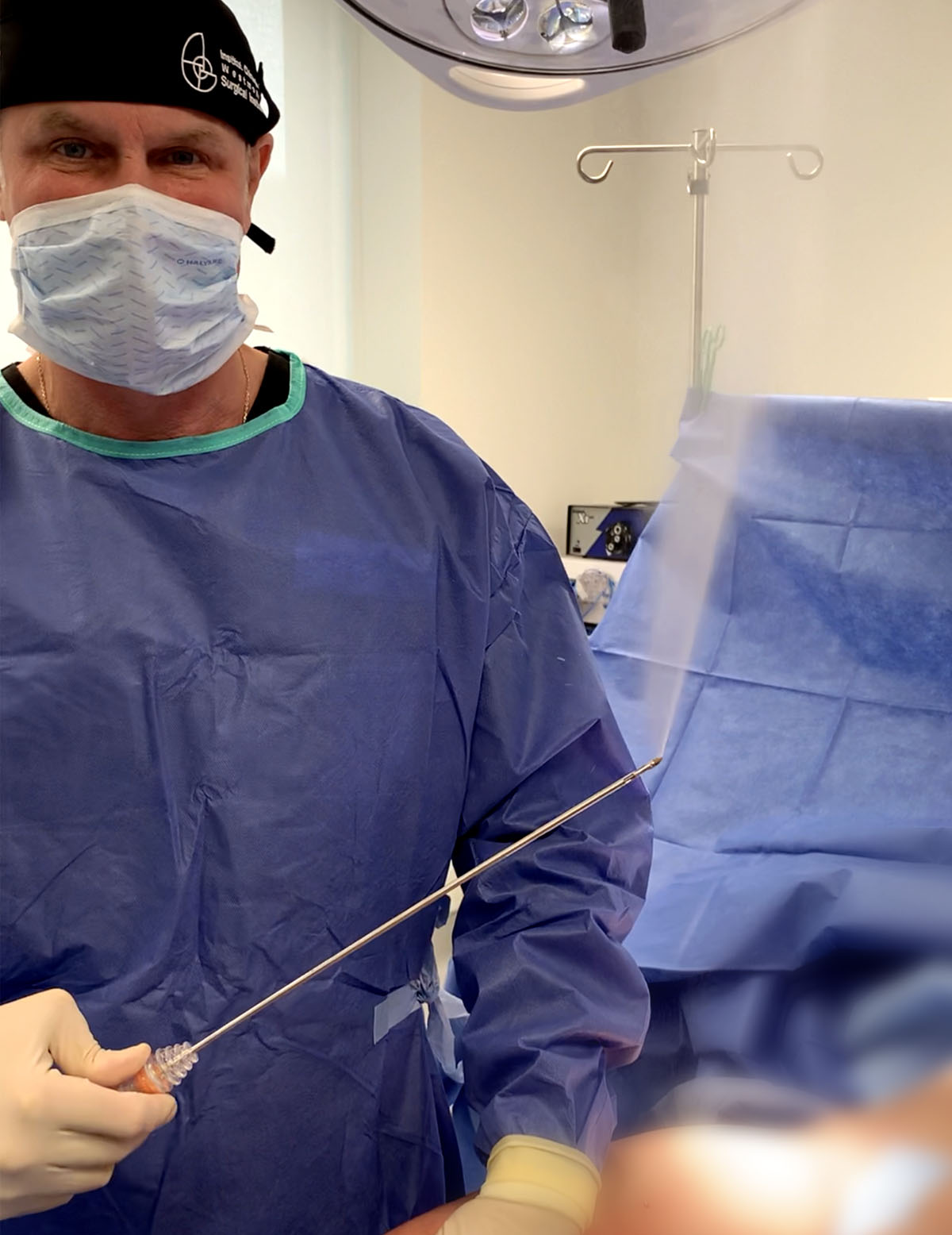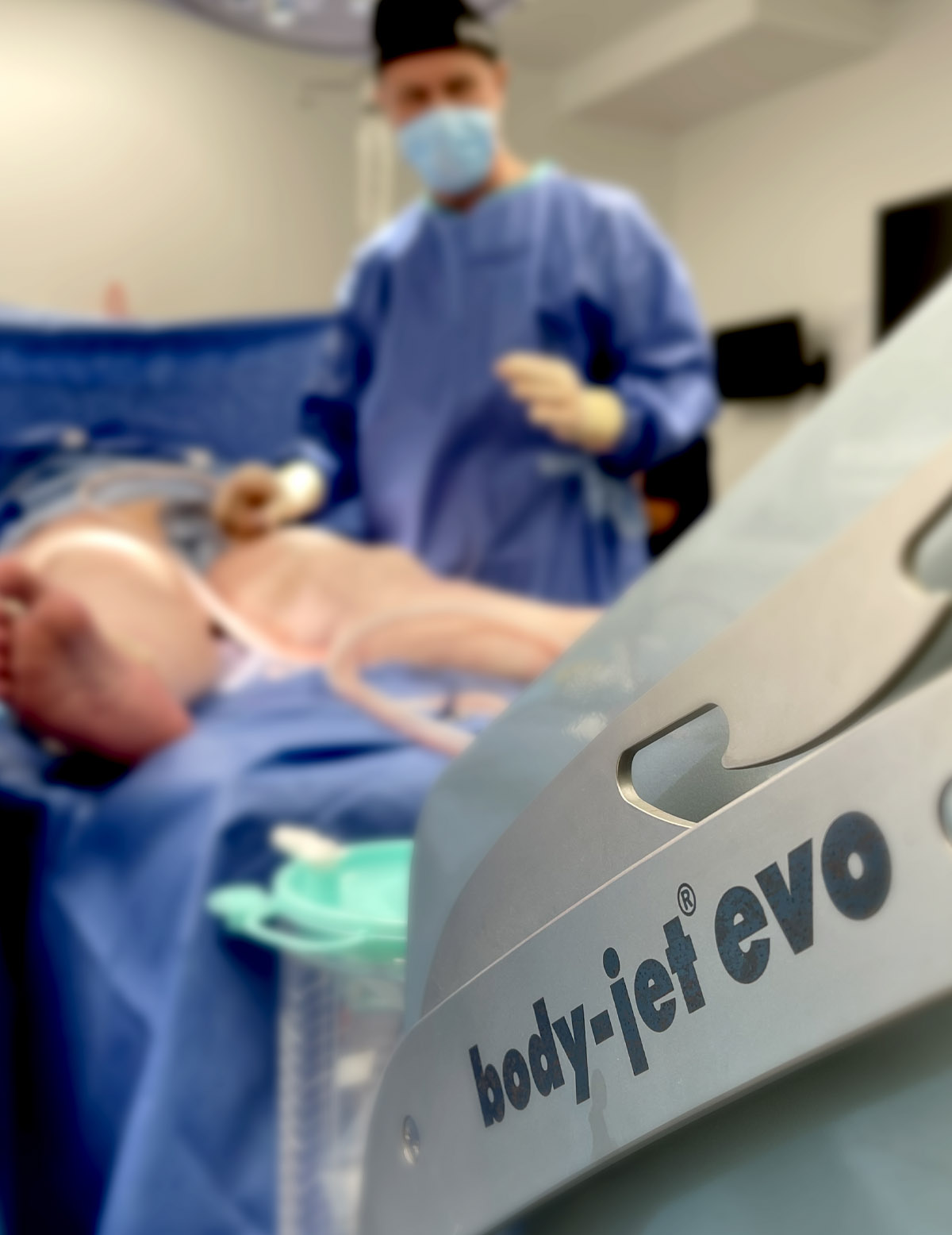NEED A SATURDAY APPOINTMENT?
We are Open on Saturdays. (Consultations & surgery offered)
Call us today to book your appointment!
Water Jet Assisted Liposuction (WAL) is a highly specialized technique used in the treatment of lipedema. Unlike conventional liposuction methods, during the WAL procedure, fat is gently dislodged from the tissue structure using a flat, fan-shaped jet of water and then suctioned out. The surrounding lymphatics, connective tissue, nerves and blood vessels remain much less traumatized, which is extremely important in the treatment of lipedema.

Water-Assisted Liposuction (WAL) works by using a specialized cannula that simultaneously injects a tumescent solution in a fan-shaped jet and suctions out the loosened fat and fluid. The water jet gently dislodges fat cells, separating them from the surrounding tissue, which allows for a lower suction pressure and causes less trauma to the tissue and blood vessels compared to traditional liposuction. This process also minimizes blood loss and bruising and can result in a quicker recovery.
Lipedema fat is fibrotic and challenging to remove using traditional methods. Water jet-assisted liposuction for lipedema specifically targets these stubborn fat deposits while preserving healthy tissues. It gently dislodges fat with a water-jet, preserving the delicate lymphatic vessels, blood vessels, and connective tissue that are easily damaged by traditional methods. This minimizes trauma, reduces bruising, and helps alleviate pain, swelling, and heaviness while improving mobility.
Key advantages of Water Assisted Liposuction WAL for lipedema:
While traditional liposuction is effective for general fat removal, it may not be suitable for lipedema due to the condition’s unique challenges. In contrast, water-assisted liposuction offers:

The amount of fat that can be removed by Water Jet-Assisted Liposuction (WAL) varies by individual and is subject to safety guidelines, typically up to 5 liters (about 11 pounds) in a single session, or 2–2.5 liters per body side. WAL itself may result in slightly more fat aspirate compared to conventional methods, but the total limit is set by overall health, state regulations, and the risk of complications like fluid shifts.
Compression garments are typically worn 24/7 for the first several weeks, while MLD sessions help activate the lymphatic vessels and are crucial for moving fluid and reducing pain. The combination helps minimize swelling, bruising, and discomfort while encouraging the skin to conform to its new shape.

Water-Assisted Liposuction (WAL) uses a gentle stream of saline solution to dislodge fat cells, which are then suctioned out. It is considered a less invasive and gentler technique than traditional liposuction, which helps preserve surrounding tissues, nerves, and blood vessels. This can lead to a faster recovery, less bruising, and is particularly beneficial for patients with lipedema.
Tissue trauma: WAL is less traumatic to surrounding tissues because the water jet is gentler than the blunt force of traditional liposuction cannulas.
Fat cell viability: Traditional liposuction often destroys fat cells, while WAL leaves them largely intact, making them viable for potential use in fat transfer to other areas of the body.
Faster recovery: The gentle nature of the procedure can lead to a shorter recovery time compared to traditional liposuction.
Less bruising and swelling: The reduced tissue trauma can result in less bruising and swelling.
Lymphatic preservation: It is designed to be less traumatic to the lymphatic system, making it a suitable option for lipedema patients who need to avoid damaging lymphatic vessels.
Fat transfer: The ability to harvest viable fat cells makes it an option for procedures like autologous fat transfer, which adds volume to other areas.
Many patients are pain-free just a few days after the procedure and can resume their daily activities. Thanks to the gentle technique, swelling is reduced, and recovery time is shorter than with traditional liposuction methods.
The WAL technique is considered particularly safe and gentle on tissue. The risk of injuring nerves or blood vessels is very low. Studies have so far shown no damage to lymphatic vessels. Side effects such as swelling or bruising are possible but usually resolve quickly.
Yes. With the WAL technique, the diseased fat tissue is removed, stopping the progression of the disease. The procedure is performed circumferentially and radically to ensure all lipedema fat cells are removed. The lipedema pain disappears, and the contour of the affected body areas is permanently improved.
We’ve created the most advanced techniques to relieve pain & help those suffering from Lipedema get their life back!